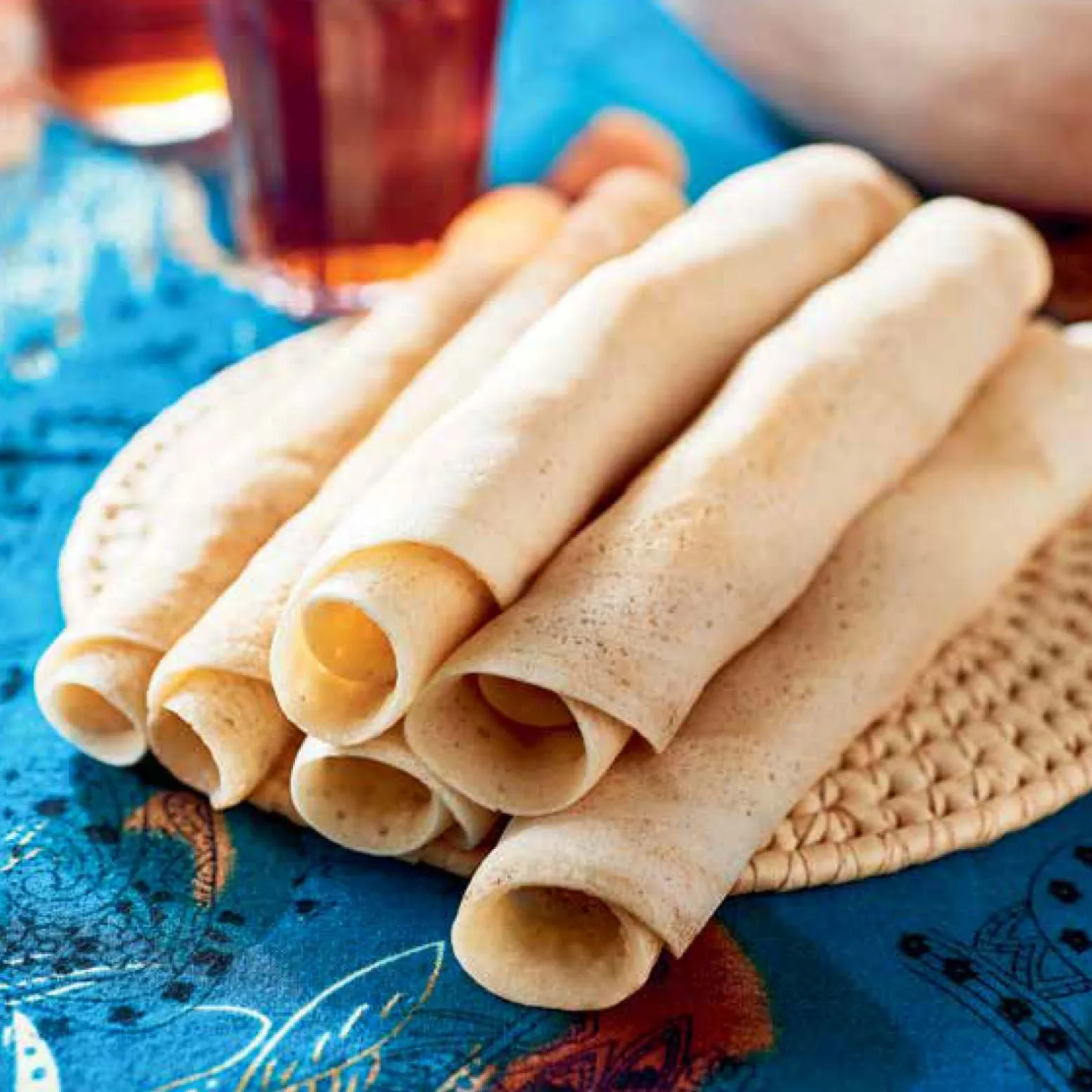When it comes to Somali cuisine, one dish that stands out for its distinct texture and cultural significance is Canjeero. These spongy pancakes, also known as Somali pancakes, are a staple in Somali households and are enjoyed throughout the day, from breakfast to dinner. With their unique texture and delightful flavor, Canjeero pancakes have become a beloved part of Somali cuisine.
Canjeero is made from a simple batter consisting of flour, water, yeast, and a pinch of salt. The batter is traditionally left to ferment overnight, allowing the yeast to work its magic and create bubbles throughout the mixture. This fermentation process gives Canjeero its characteristic spongy texture and subtle tangy flavor.
The preparation of Canjeero is an art form in itself. The batter is poured onto a hot, lightly greased pan or a large round griddle called a “sufuria.” The cook skillfully spreads the batter in circular motions, creating a thin, round pancake that cooks evenly. The key is to achieve a perfect balance between thickness and sponginess, resulting in a pancake that is light and airy yet substantial enough to hold its shape.
As the Canjeero cooks, small bubbles form on the surface, and the edges begin to crisp up. This is a sign that the pancake is ready to be flipped. With a quick and confident motion, the cook flips the Canjeero to cook the other side, revealing a golden brown color and a slightly crispy exterior. The final result is a stack of soft, spongy pancakes with a touch of crunch.
Canjeero is not only appreciated for its unique texture but also for its versatility. It can be enjoyed in various ways, depending on personal preference and the occasion. In Somali households, Canjeero is often served with a range of accompaniments. It is commonly eaten with Suqaar (a flavorful meat or vegetable stew), Maraq (a hearty soup), or a variety of Somali sauces such as Basbaas (spicy tomato relish) or Xawaash (a fragrant spice blend).
One of the most beloved ways to enjoy Canjeero is by tearing off a piece and using it as a utensil to scoop up other dishes. The spongy texture of the pancake allows it to soak up the flavors of the accompanying stews or sauces, creating a harmonious blend of tastes and textures in every bite. This communal style of eating, known as “canjeero and maraq,” brings people together and adds a sense of shared enjoyment to the dining experience.
Canjeero is not just a delicious food; it also carries cultural significance for the Somali people. It is often served during important events and celebrations, such as weddings and religious holidays, symbolizing hospitality, unity, and generosity. Sharing a plate of Canjeero is a way to connect with Somali heritage and traditions, creating a sense of belonging and community.
Beyond the Somali diaspora, Canjeero has gained recognition and popularity in international culinary circles. It has become a sought-after dish among food enthusiasts and those curious about exploring the diverse flavors of African cuisine. Its unique texture and ability to pair with a wide range of flavors make it a delightful addition to any culinary adventure.
So, the next time you want to savor something truly special, seek out the spongy delight of traditional Somali Canjeero. Whether you enjoy it with a savory stew or indulge in its unique texture on its own, these pancakes will transport you to the vibrant world of Somali cuisine, where food is more than just sustenance—it’s a celebration of culture and community.








